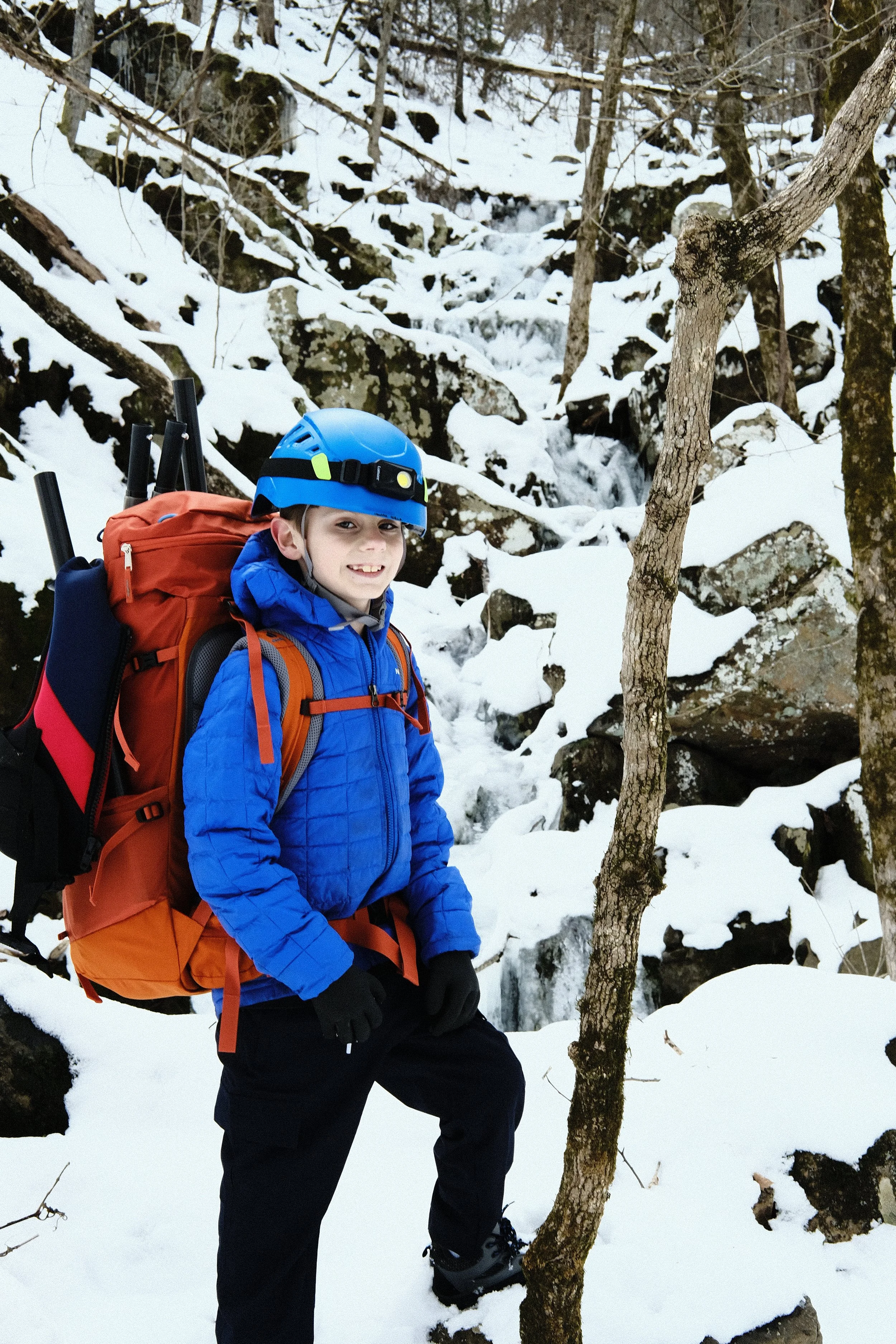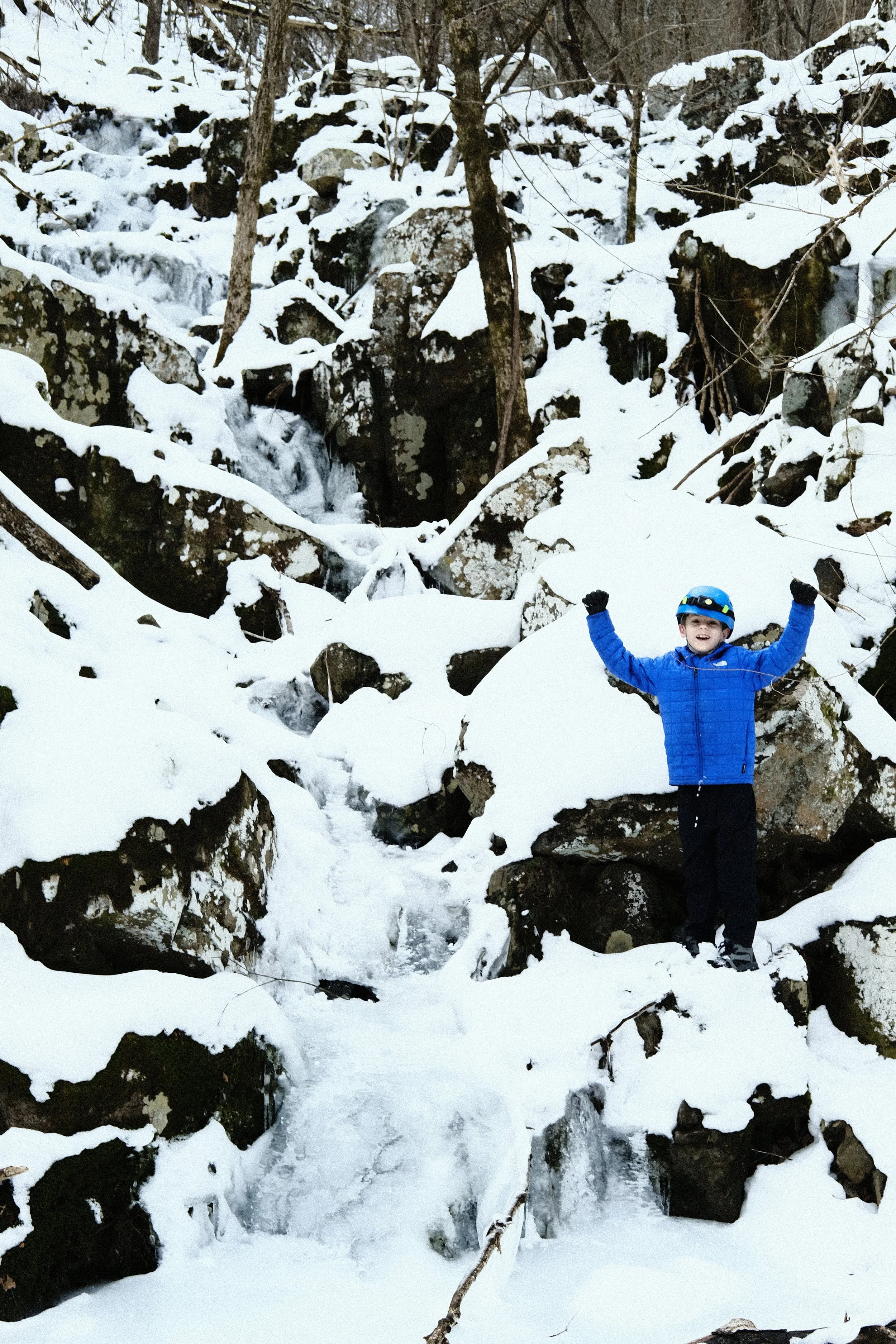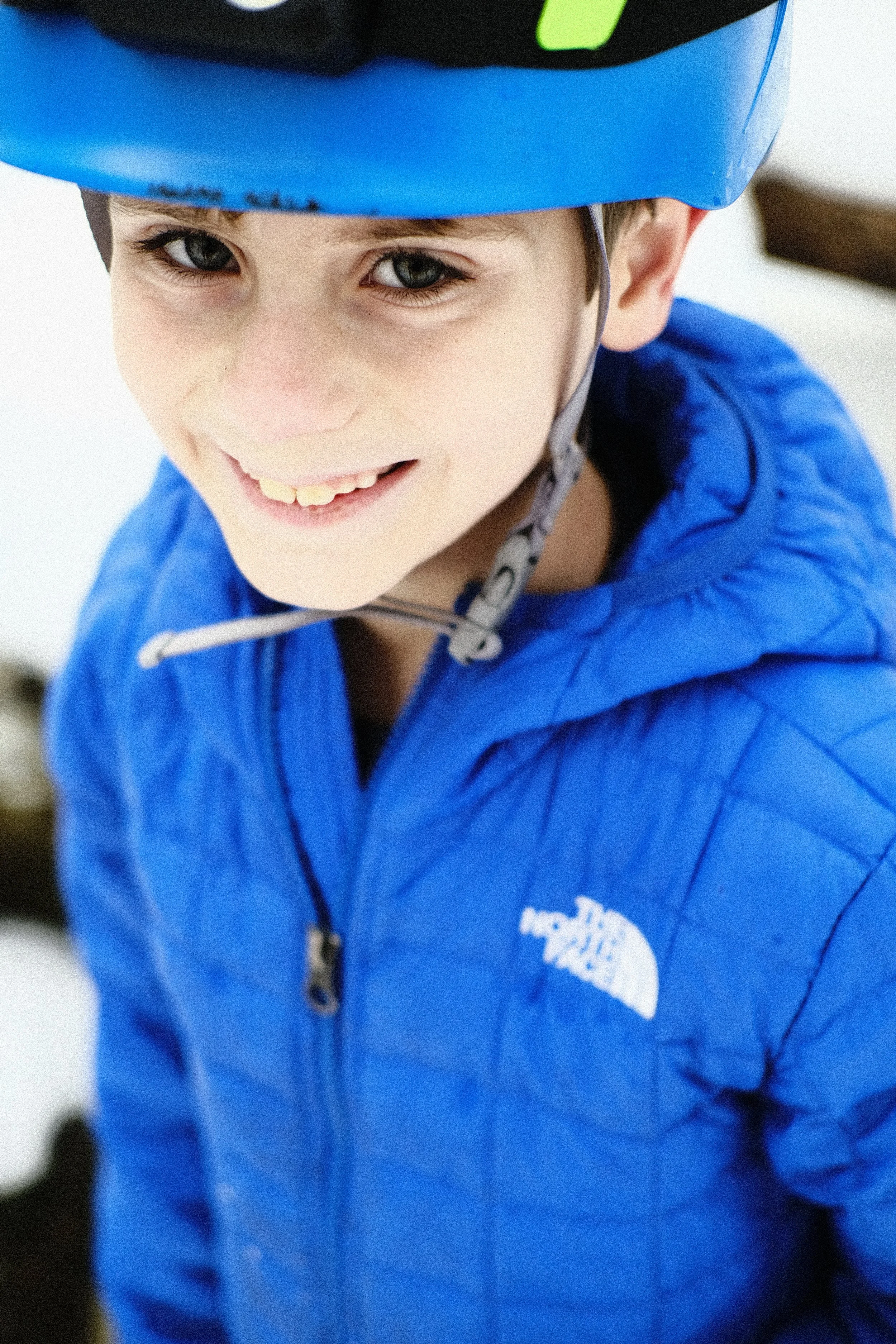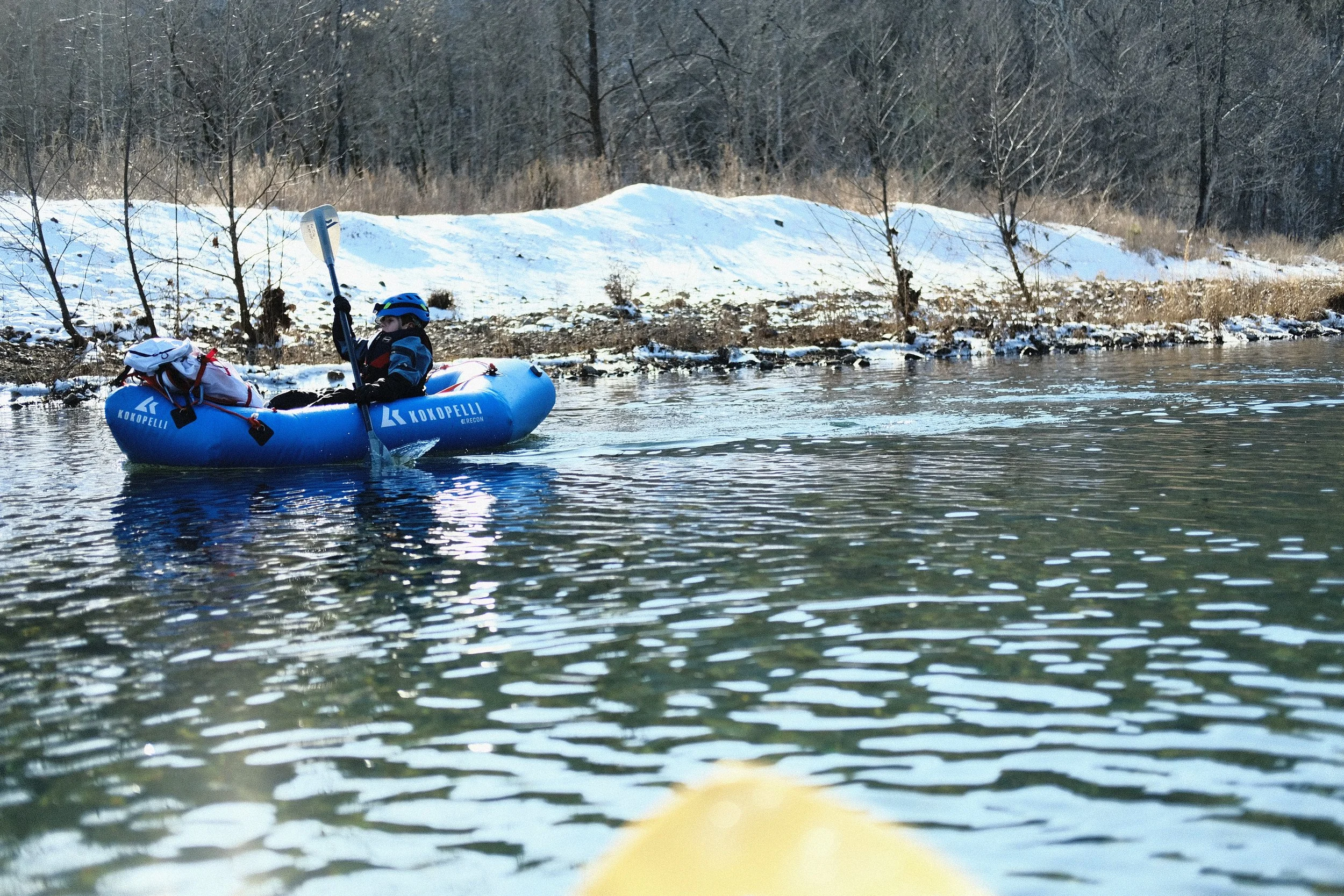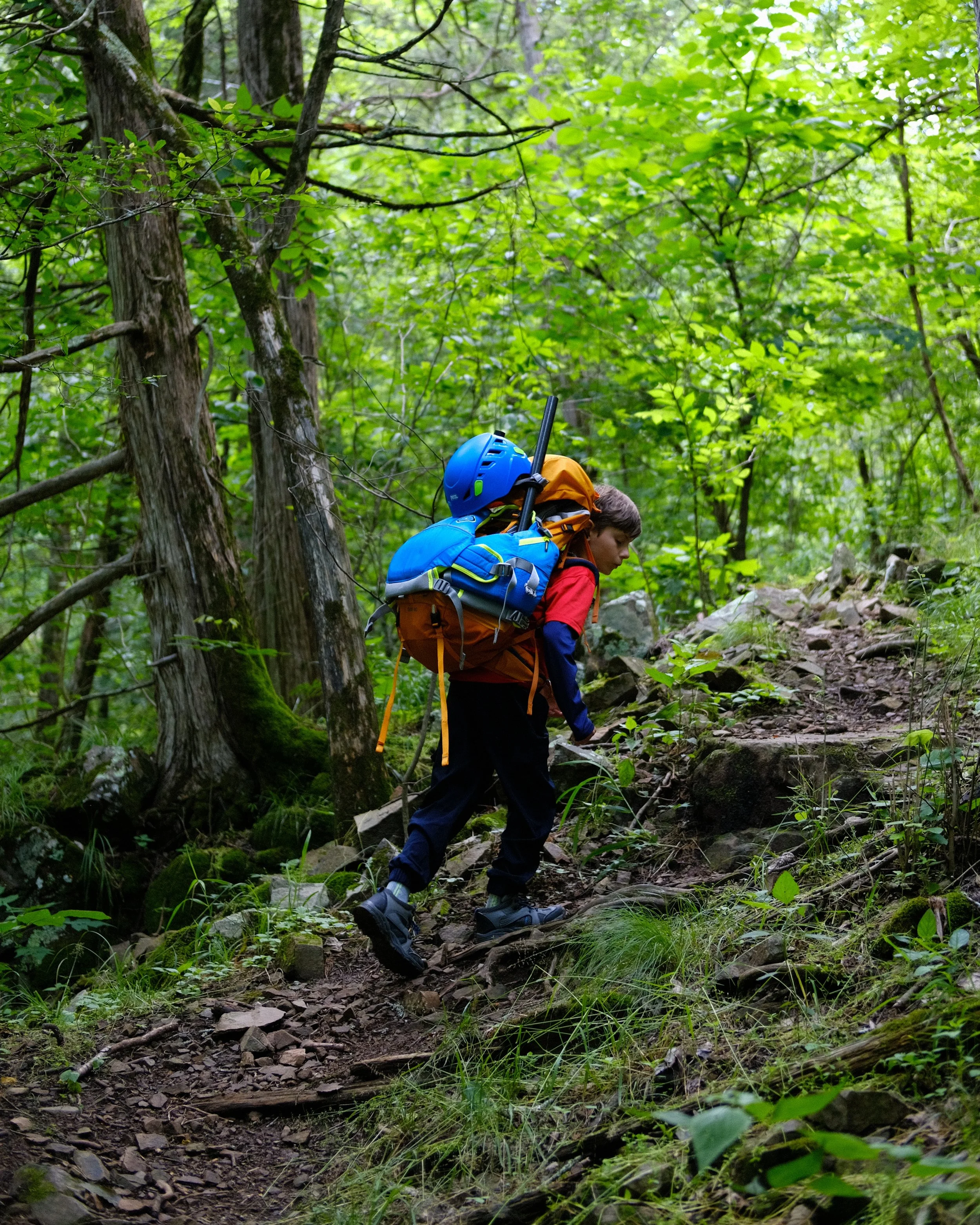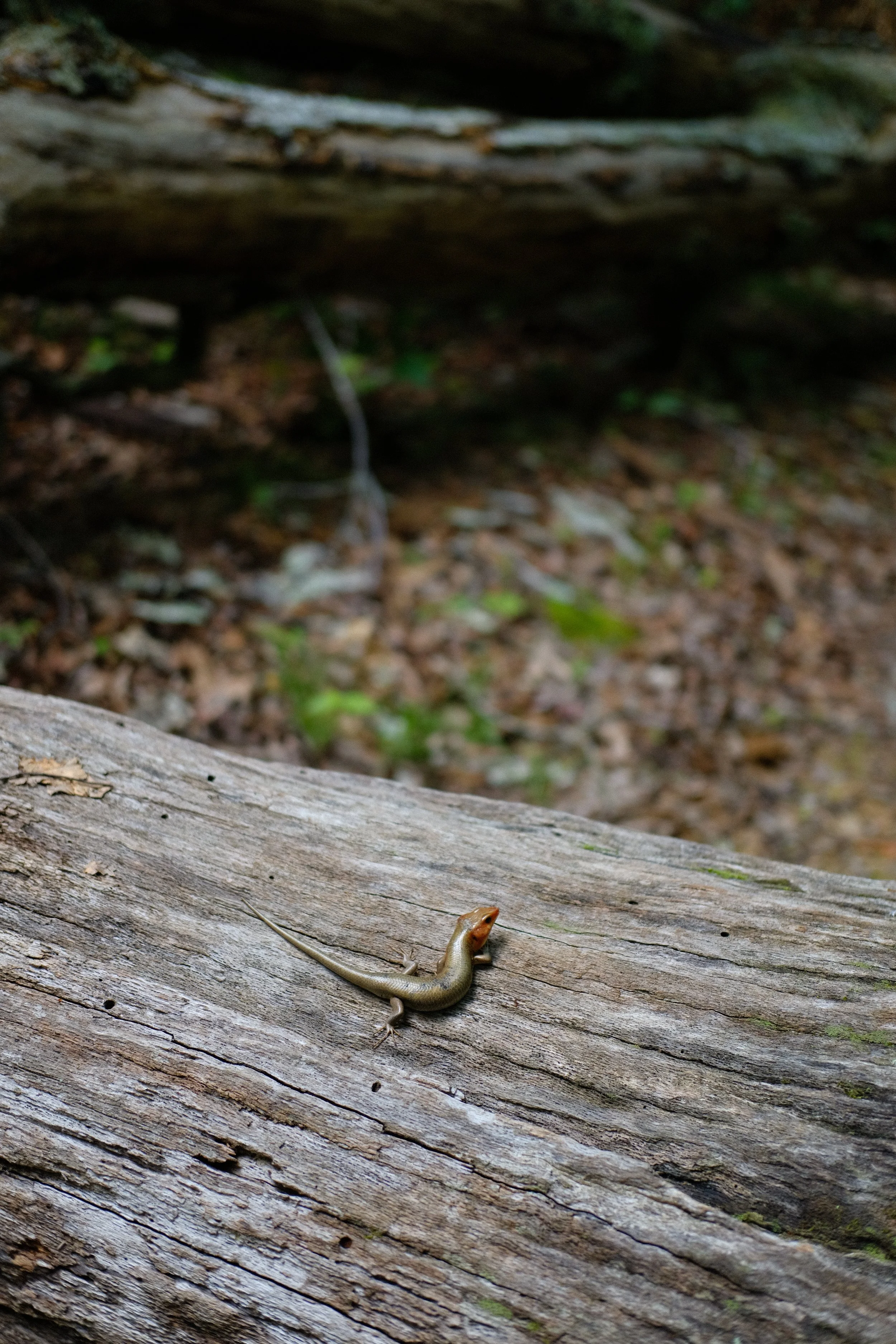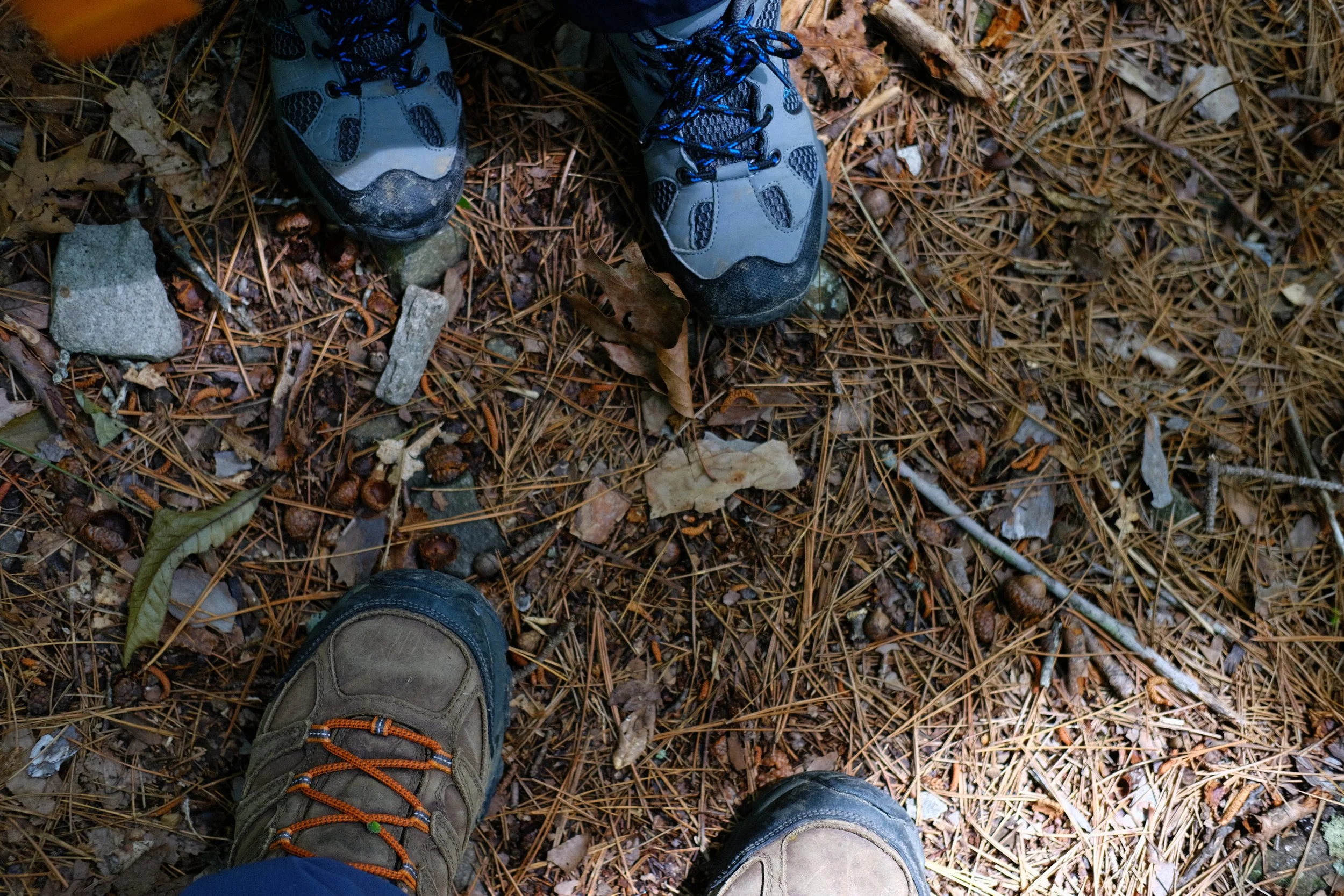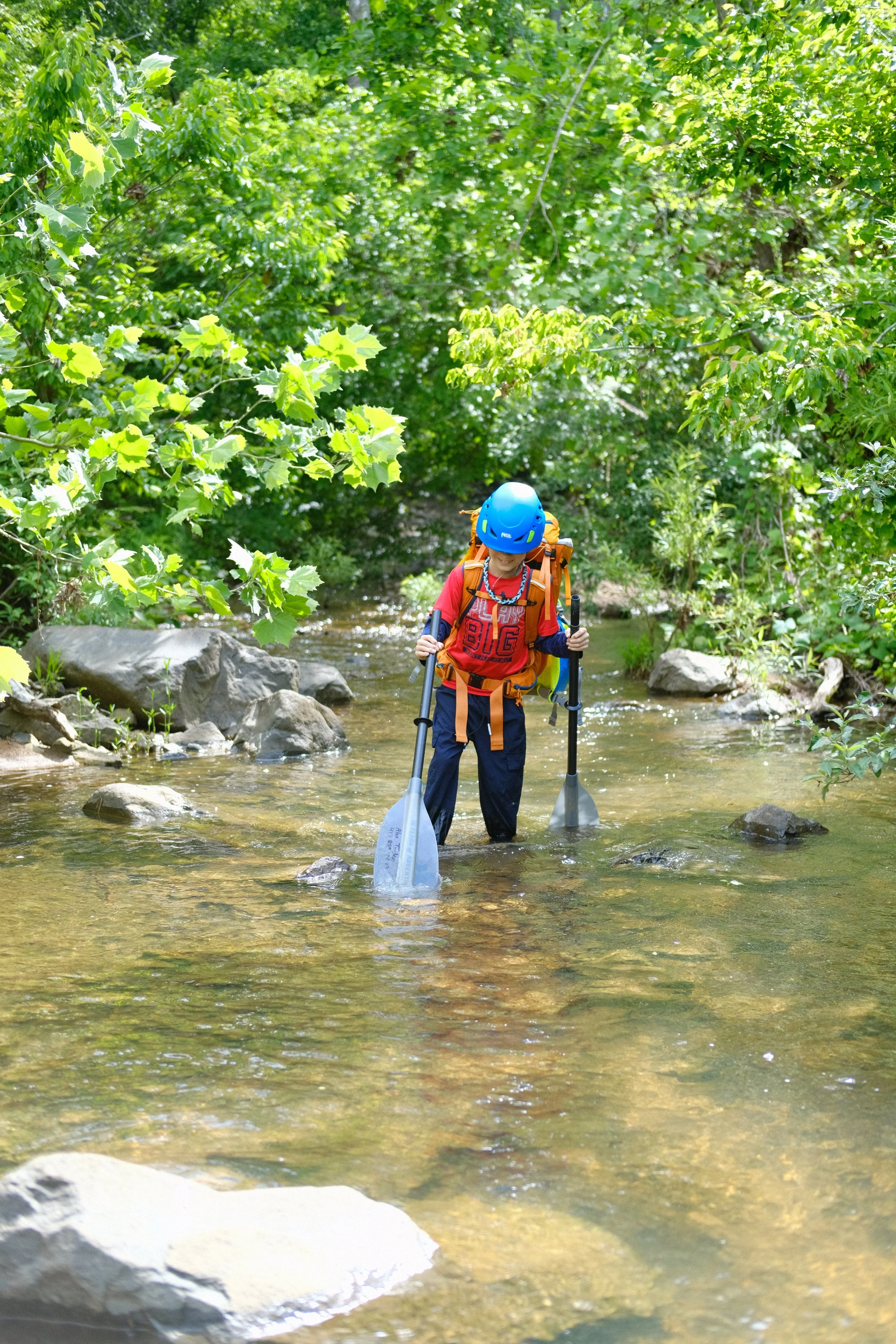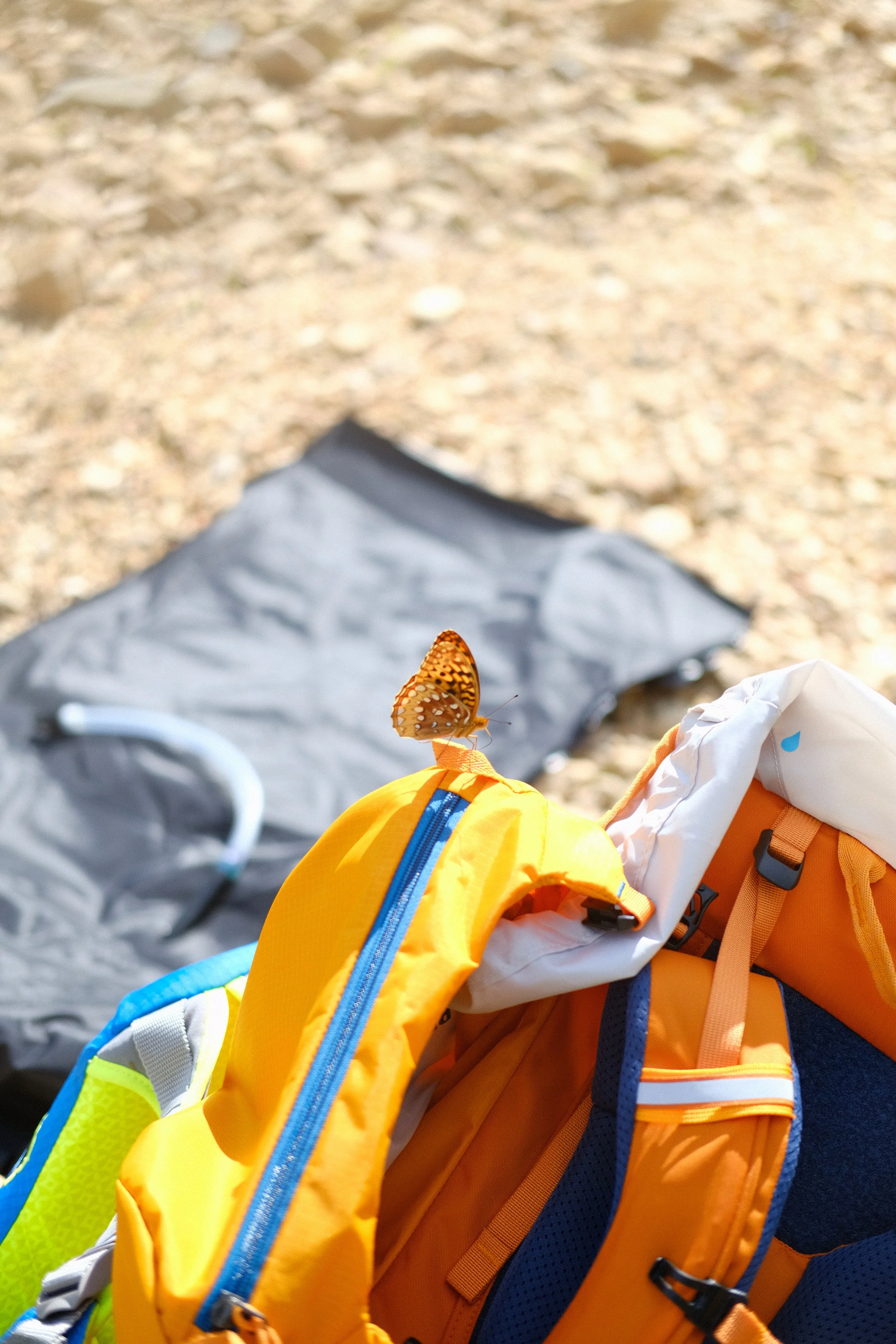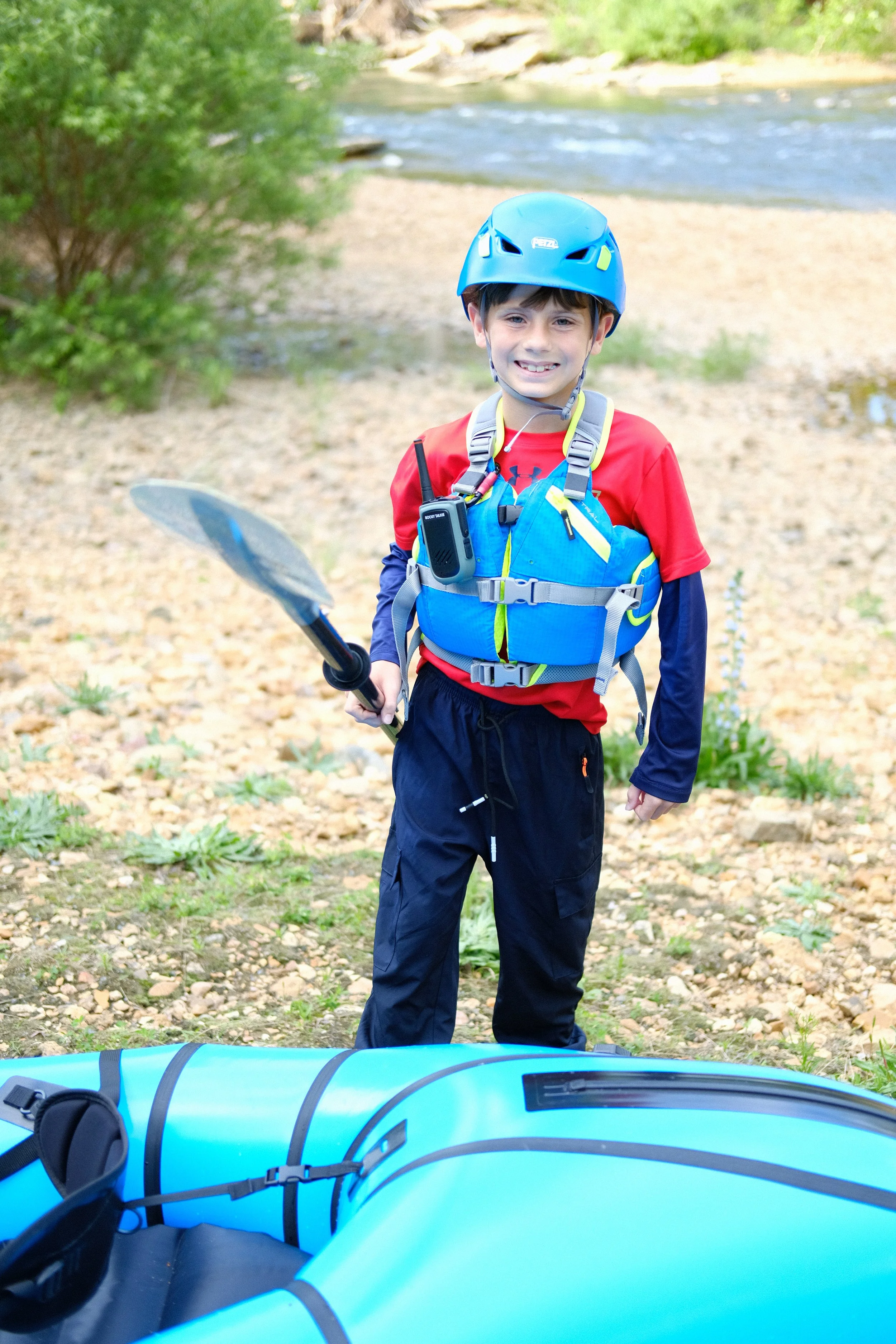
Big Creek - My Sons First Packrafting Trip
This scenic section of Big Creek within Sam A. Baker State Park offers beginner-friendly whitewater with short Class II segments interspersed with long stretches of relaxing flatwater. The run is characterized by granite shut-ins, shallow shoals, deep clear pools, and bluff-lined banks typical of the Eastern Ozarks.
Ideal for beginner paddlers, families, and those learning to run moving water, this creek section provides a rewarding blend of low-consequence rapids and remote-feeling wilderness. Hike-in access offers optionality for loop trips.

Write up by Alex T.
Tucked inside the rugged beauty of Sam A. Baker State Park, Big Creek winds its way through the Ozarks with just enough gradient and charm to make it, in my opinion, the perfect place to learn the ropes of packrafting. Its mellow Class I/II waters are forgiving yet engaging, and the park’s trail system offers plenty of ways to stitch together custom hike-and-paddle adventures.
So when my 9-year-old son, Nicholas, was finally ready to transition from pool sessions to moving water, there was no question where we’d go.
“It’s going to be cold." That was the understatement of the week.
Fresh from his final whitewater pool session, Nicholas was eager to hit the trail. The only catch? It was late February in Missouri, and a fresh 8 inches of snow blanketed the ground. We debated, weighed risk vs. reward, and decided to keep things simple for his first moving water experience — a one-mile hike in and a one-mile paddle back.
I knew this route well. Flat terrain and a friendly Class I paddle back to the truck. Besides, the park was empty. Completely empty. I left a detailed trip plan at home — something I always do (and will write more about in a future post) — and we set off into a winter wonderland.
Fresh snow revealed a gallery of animal tracks, and frozen water cascaded down the shut-ins along our trail. We stopped often, both to marvel and to talk. One of our best conversations revolved around risk — how we evaluate it, manage it, and grow from it.
“Fresh snow revealed a gallery of animal tracks, and frozen water cascaded down the shut-ins along our trail”
At the creek bank, we unpacked our older boats. I’d modified the seating to fit Nicholas better, but the trade-off was a heavy load — close to 40 pounds of gear on my back. We climbed into drysuits and slid onto the water. I kept him close as we navigated the short float. A few riffles, one portage around a downed tree, and then calm water.
About a quarter mile from the take-out, Nicholas’s hands got cold. He tucked them under his PFD while I rafted us through the final stretch.
Back at the truck, the heater blasted and fingers thawed. We grabbed chai lattes at The Station in Fredericktown. Despite the chill, Nicholas was hooked — with one small request: "Next time, let’s wait until it’s warmer."
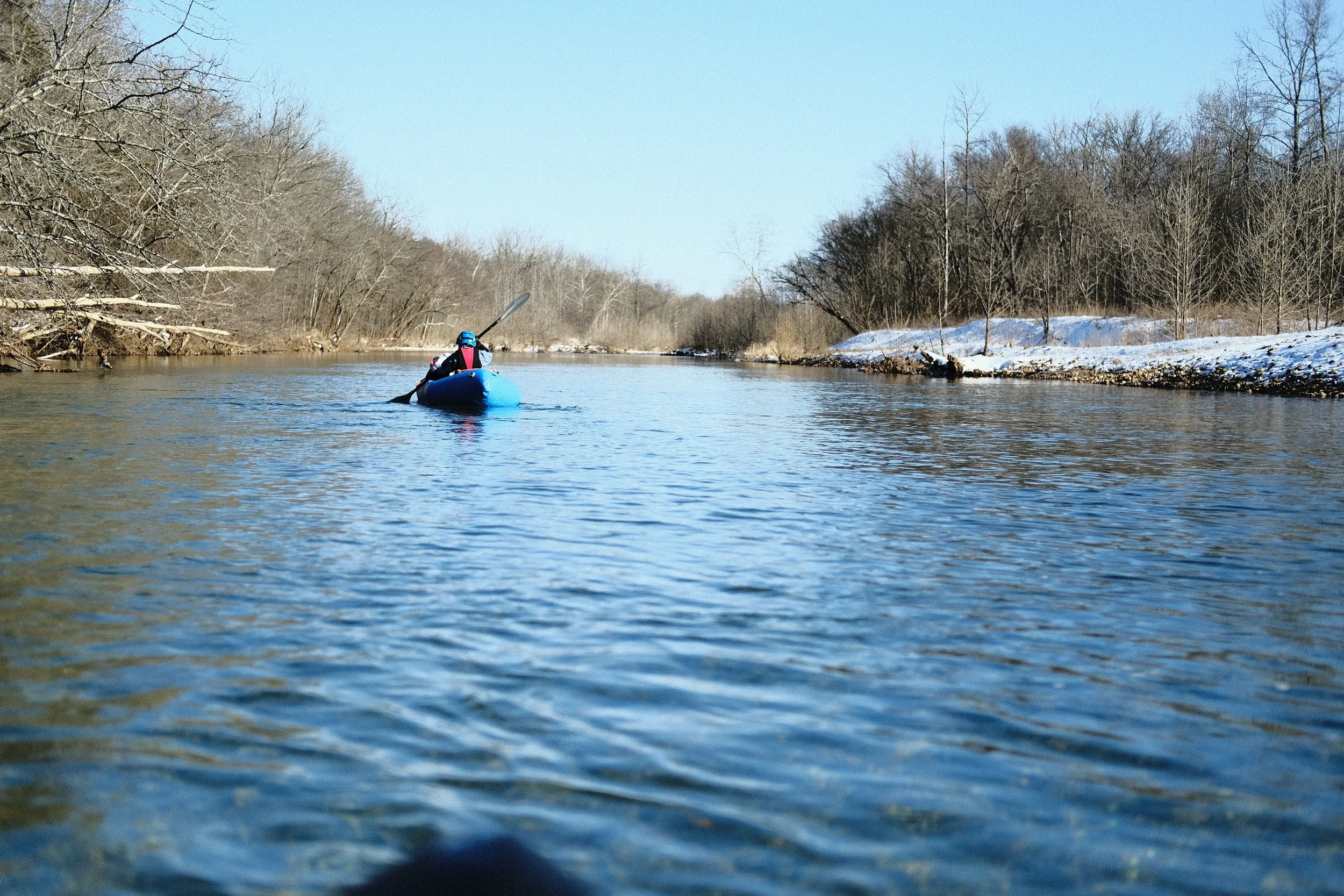
"The rapids are so much fun!"
That was the verdict from Nicholas after running his first real shut-in rapid — and I couldn’t have agreed more.
For our second trip, we waited for spring to arrive. With air temps in the mid-70s and a steady USGS gauge reading of 2.4 feet, conditions were near perfect. (Pro tip: Big Creek runs best between 2–4 feet. Below that, you’re dragging boats. Above, some features start pushing into Class III territory.)
This time, Nicholas was ready to stretch his legs — and his skills. We planned a 3-mile hike with a 3-mile paddle back. He helped pack our gear the night before after a short session on the climbing wall in the garage. Thanks to our newer Alpacka rafts, we shaved 15 pounds of weight and a full backpack of space compared to our old setup. He carried the floors, his dry layers, PFD, paddle, and helmet. I handled the rest, including radios, first aid, snacks, and camera gear.
We hit the trail early. The park was empty again and the trail wound steadily uphill, climbing 1,000 feet over the first few miles. We saw animal tracks, sunning skinks, and found three stone-and-wood shelters built by the Civilian Conservation Corps nearly a century ago. Nicholas was fascinated with how trails are designed and built — especially the way they climb hills. His takeaway: “Make sure there’s cool stuff to see, and protect nature.”

After the third shelter, we dropped into one of my favorite trail sections — a quiet corridor of towering pine leading down to the confluence of Mudlick and Big Creek. We crossed a shallow stream and emerged onto a gravel bar, the water glinting in the sunlight. Time to paddle.
As we inflated our boats, a spangled fritillary fluttered nearby — the perfect moment of calm before the splash. We ran a quick comms check on our Rocky Talkies, reviewed the line through the Class II- shut-in just downstream, and launched.
Nicholas handled the rapid cleanly, with a wide smile and a triumphant shout: “The rapids are so much fun!”
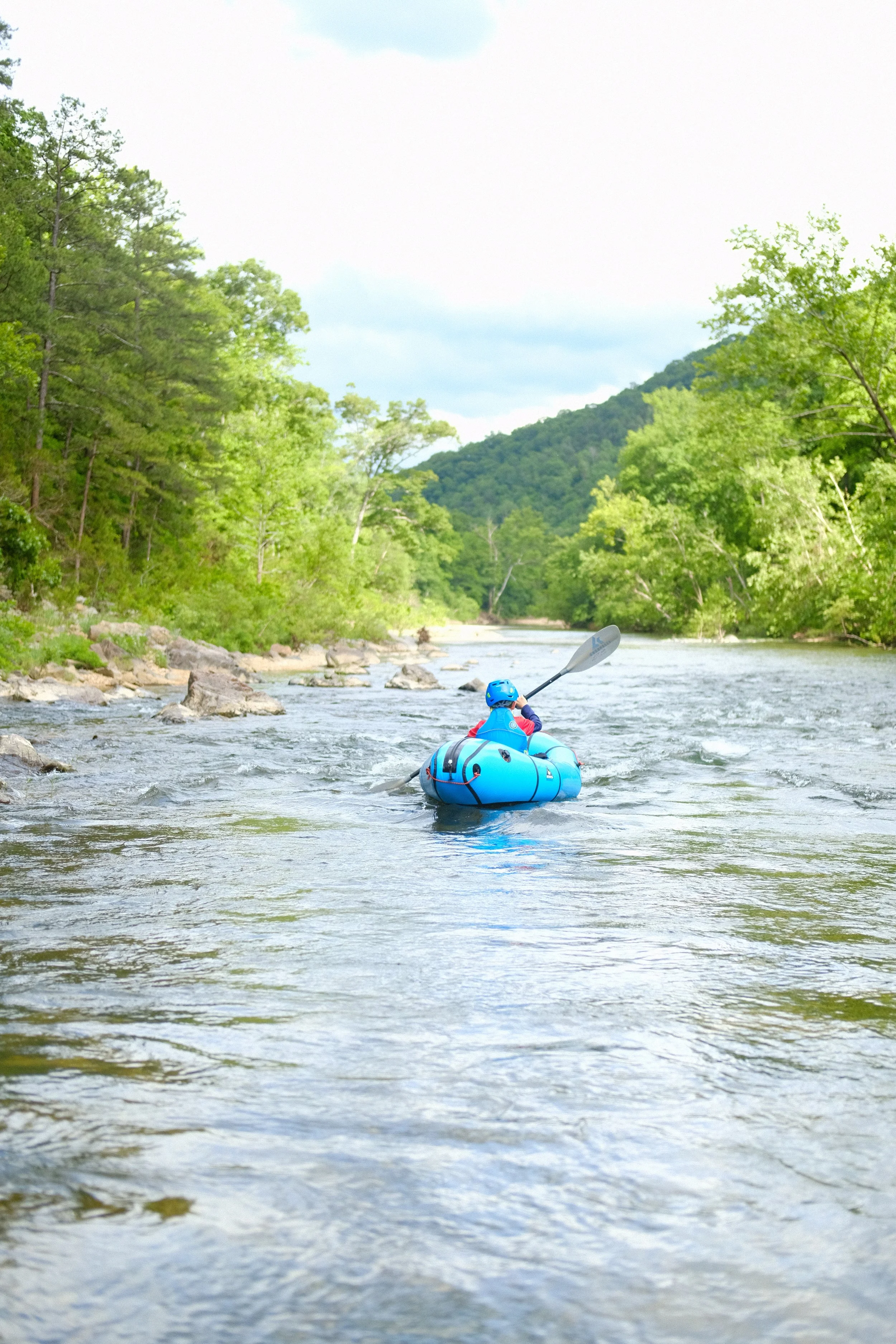
Downstream, Big Creek mellowed into a scenic Class I float, complete with shoals, bluffs, and long, deep pools. We glided past schools of gar — twenty or more at one point — their sleek shapes visible in the clear water. Nicholas worked on his sweep strokes to stay on line through each riffle, while I stayed just ahead, setting safety. He didn’t need it.
His technique had grown since winter, and it showed. Every bend he navigated solo. Every shoal, another notch of confidence.
We encountered just one more downed tree — a full strainer blocking the channel — which we easily portaged. Aside from that, it was smooth sailing. Herons, ducks (including a mother and eight curious ducklings), and even an eagle joined us on our quiet float. No other people. Just us, the water, and the wilderness.
At the take-out, we deflated our boats and changed into dry clothes. Before I could start loading the truck, Nicholas asked: “When are we going again?”
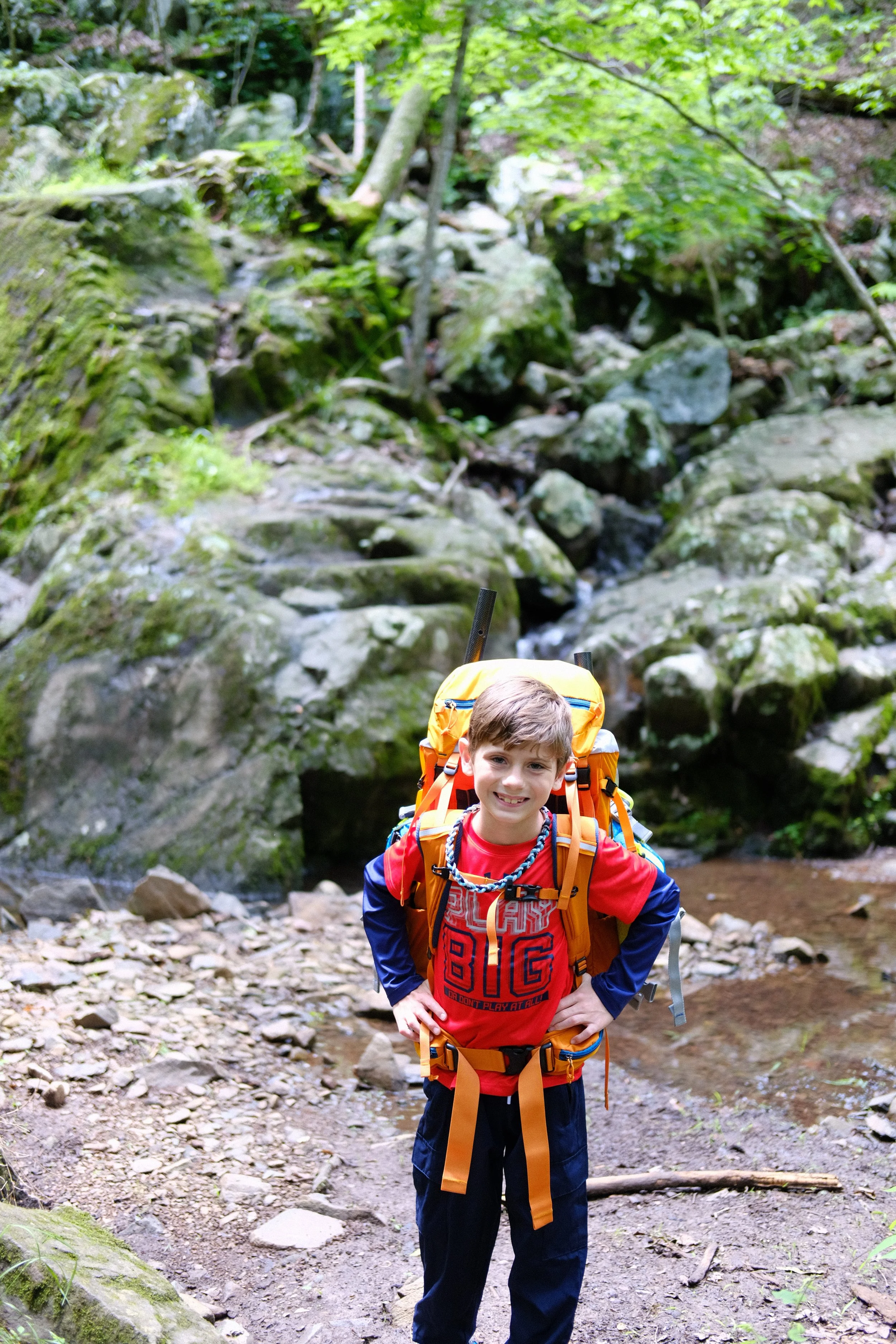
Big Creek may not be the best stream in the Ozarks, but for learning — especially with kids — it’s nearly perfect. Class I/II rapids, clear recovery pools, hike-in options, and enough beauty to stop you in your tracks. It’s where my son learned to read the water, carry his own gear, and paddle with purpose.
And for me? It's become the place where I get to watch him grow, one rapid at a time.
